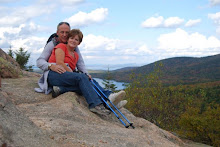



We are now in New Orleans for the next few days. Our first stop in the French Quarters was Cafe du Monde for our warm Beignets and Cafe Au Lait, a New Orleans tradition since 1862. And the fried, confectioners' sugar-dusted doughnuts didn't disappoint us! One suggestion....don't wear black!
The historic center of the city is Jackson Square, unofficially the Quarter's Left Bank. This area attracts crowds due to the sidewalk artists, palm readers and street performers. Facing Jackson Square is St.Louis Cathedral, one of the oldest and most photographed churches in the country.


All parts of this city were hit hard by hurricane Katrina in 2005 by force winds and rain, but it was the flooding from the levee breaches that caused catastrophic damage. The city already lies 6-feet below sea level and when this system failed, 80 percent of the city was under water. The French Quarters saw minimal damage because it is on higher ground. The Bourbon Street area is run down, but it has always looked that way. We love the wrought-iron balconies, wraparound porches, French windows and hidden courtyards so famous in this area. Coming into the city, we did see areas where there is still damaged neighborhoods and smaller business boarded up and vacant lots for sale. It is amazing there is still trace of the devastation after all these years.
It is interesting that New Orleans is 100 miles from the ocean, but it is surrounded by water; Lake Pontchartrain and the mighty Mississippi River. The city has endured many storms and fires, but continues to survive. The Big Easy and unofficial motto, Laissez les bons temps rouler ("Let the good times roll") say it all down here.
We will be back tomorrow for more walking around the garden district, St. Charles streetcar, and visit some cemeteries.













































